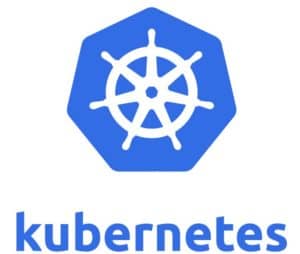Healthcare providers are turning to rapid-development cloud applications and security to optimize their healthcare and business operations. The race for better security and performance has led developers from on-prem servers to cloud infrastructure to containers, including the well-known container orchestration platform Kubernetes.
In this article, we introduce Kubernetes, how it works, and how it applies to different professional scenarios.
What is Kubernetes?
 To understand Kubernetes, you must understand containers.
To understand Kubernetes, you must understand containers.
Applications have evolved over the decades. What once were local executables on dedicated machines have quickly become distributed online Software-as-a-Service (SaaS) or more advanced cloud applications. Distributed or service use means that these applications are being run remotely, and often by numerous users at the same time.
This can, understandably, create huge problems across several areas. First, it is difficult to secure applications that share server real estate with other application instances. Secondly, having dedicated applications running on shared server resources can hinder performance. Thirdly, limitations in both security and resource allocation limit the scalability of these applications.
A stopgap solution was virtualization. By loading virtual machines, you can leverage CPU processing power to create isolated instances for each application. These also helped with performance; as applications run in VMs, resources are easier to isolate and, therefore, optimize. However, VMs aren’t necessarily optimal in that, while better than server apps, they still came with challenges–namely, in limited performance scaling and difficult file sharing between the OS and the VM.
Enter containers. A container can be thought of as a lightweight VM that addresses some of the limitations of virtualization. These benefits include:
- Portability: You can run app instances and testing runs on any OS you want, including most distributions of Linux, Windows or many cloud platforms.
- Streamline Microservice Development: With containers, you can roll out and deploy container images as you make changes to the application much more efficiently than a VM.
- Optimize Performance: As there are less strict barriers between the container and the OS, you can optimize your app performance through shared files, better hardware usage or rapid scaling.
- Automate Deployment: Containers are easy to deploy, refresh, update and re-deploy as per the needs of your development cycle.
Kubernetes, however, is not a container service. Instead, Kubernetes is a container orchestration platform. By managing resources, automation triggers and inter-container relationships, Kubernetes allows developers to create a container environment that can run several, interrelated micro-services that build into larger public applications. With containerized services, developers can rapidly roll out updates and changes in a modular fashion without relying too heavily on monolithic app versioning.
How is Kubernetes Used in Healthcare?
Large SaaS and cloud applications are becoming the norm in healthcare scenarios, and major cloud providers, particularly Microsoft Azure, are making a hard sell into the healthcare industry. Cloud platforms can allow any organization to use features like automation, AI, business analytics and organization-wide data access to drive innovation and optimization from day-to-day clerical and insurance tasks to high-level medical treatment and diagnosis. As such, developers are turning to services like Kubernetes to build large-scale healthcare apps.
The truth is that app development in healthcare is increasingly calling for rapid innovation and business resiliency (and, in most cases, continuity). That means low downtime, high performance and high accessibility.
Containers orchestrated with Kubernetes provide a platform for healthcare app developers to rapidly create, launch and iterate applications over time. Furthermore, container orchestration provides a high level of transparency, where administrators can better understand what’s happening in a development cycle.
Finally, container orchestration can support cybersecurity for apps and microservices. As apps are deployed, old instances are destroyed. That means that containers containing malware or other problematic control can be removed from service relatively easily. Additionally, Kubernetes helps you apply security patches and remediation across an entire slate of services.
What Are Some Steps to Take to Make Kubernetes HIPAA Compliant?
While Kubernetes comes with several advantages that benefit developers and healthcare users, it’s obviously still critical that containerized apps comply with HIPAA regulations.
Some steps you can take or consider to guarantee HIPAA compliance are:
- Knowing Your Data: As your containerized apps pass data internally or externally, then it’s important to know where that data is, where it’s been, and who has access to it. A properly configured Kubernetes system can support orchestrating data such that it always stays within compliance.
- Configuring Access Controls: Each container should follow principles of least privilege and, if helpful, zero-trust architecture. Furthermore, fine-grained access controls like Role-Based Access Control (RBAC) can ensure that only authorized providers can access patient data.
- Encrypting Data: Kubernetes, with the right modules, will allow you to encrypt data and containers through at-rest encryption. HIPAA requires encryption for all patient data, so having encrypted containers for applications taking patient data is key for compliance.
- Backing Up Containers: Regular and cloud systems all require backups for HIPAA compliance. Containers are no different and should have a backup automation solution in place.
- Implementing Scanning: You can, and should, scan your container systems that contain patient data to ensure that vulnerabilities are being proactively addressed.
Security and Compliance with Kubernetes
Kubernetes is secure, but it isn’t compliant by default. That means that if your organization wants to develop agile and flexible apps for healthcare customers, you will need someone to help you configure your systems for HIPAA compliance.
Don’t trust out-of-the-box solutions as your compliance strategy. Work with security experts like Lazarus Alliance who have decades of collective experience with HIPAA compliance. We can help you understand your Kubernetes system and how it fits into HIPAA requirements overall.
If your organization is interested in proactive cybersecurity and compliance, call 1-888-896-7580 to discuss your organization’s compliance needs.




Related Posts